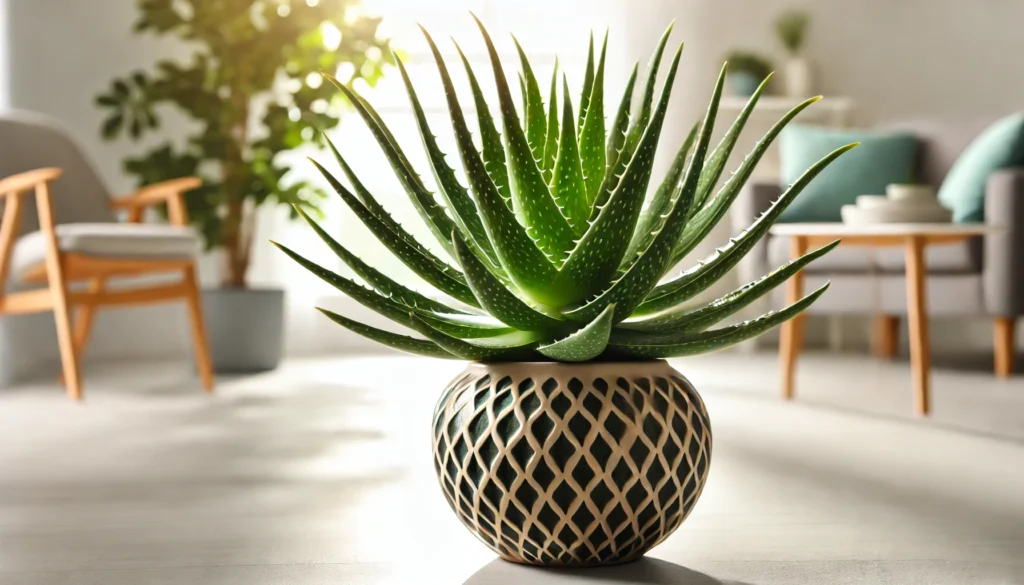
Aloe Vera, a succulent with thick, juicy leaves, is more than just a pretty plant. It has a myriad of uses, from soothing sunburns to adding a touch of greenery to your home. Its fleshy leaves, often with slight spots or stripes, grow in a rosette pattern, creating a lush and inviting appearance. Typically, Aloe Vera can reach heights of 24 to 39 inches and spread about 24 inches wide, making it a substantial yet manageable addition to your plant collection.
A Rich History and Ideal Growing Conditions
Aloe Vera has a storied history that dates back to ancient civilizations. Cleopatra, famed for her beauty, reportedly used Aloe Vera gel in her skincare routine. Ancient Egyptians, Greeks, and Romans also treasured this plant for its healing properties. Native to the Arabian Peninsula, Aloe Vera thrives in warm climates. It grows best in regions that replicate its native environment, such as parts of the southern United States and the Mediterranean.
Aloe Vera and Pets: A Cautionary Note
While Aloe Vera is a wonderful plant for humans, it is toxic to pets. If ingested by cats or dogs, it can cause vomiting, diarrhea, and lethargy. Therefore, it’s best to keep this plant out of reach of your furry friends to ensure their safety.
Caring for Your Aloe Vera
Aloe Vera is the perfect plant for those who prefer low-maintenance greenery. It thrives with minimal attention, making it an excellent choice for both novice and experienced plant owners.
Watering and Humidity
When it comes to watering, less is more. Aloe Vera is drought-tolerant and prefers to dry out completely between waterings. During the growing season (spring and summer), water thoroughly about every three weeks. In the dormant season (fall and winter), reduce watering to once every four weeks. This plant prefers dry air and doesn’t require high humidity levels, making it ideal for most indoor environments.
Soil, Light, and Temperature
A well-draining soil mix, such as a cactus or succulent mix, is perfect for Aloe Vera. It loves bright, indirect sunlight and thrives in a sunny window where it can bask for about six hours a day. However, avoid harsh, direct sunlight to prevent leaf burn. Aloe Vera is comfortable in temperatures between 55°F and 80°F but should be kept indoors if temperatures drop below 50°F.
Common Issues and Remedies
Even with the best care, Aloe Vera can encounter some common problems. Overwatering is the most frequent issue, leading to root rot. Symptoms include yellowing leaves and a mushy base. To fix this, remove the plant from its pot, trim any rotten roots, and repot it in fresh, dry soil. Aloe Vera can attract pests such as aphids and mealybugs. Combat these pests with a mild soap solution or neem oil spray. Additionally, Aloe Vera can suffer from sunburn if exposed to too much direct sunlight. If the leaves turn brown or red, move the plant to a spot with filtered light and trim off the damaged parts.
Propagation and Uses
Propagating Aloe Vera is straightforward and rewarding. The plant produces “pups” or offsets around its base, which can be removed and repotted to grow new plants. Aloe Vera gel is like nature’s first-aid kit. It’s great for minor cuts, burns, and skin irritations and is also an excellent moisturizer. Keeping an Aloe Vera plant in your kitchen or bathroom allows easy access to its soothing gel.
Final Thoughts
Aloe Vera is more than just a plant; it’s a friend that offers beauty and practicality. It’s forgiving if you forget to water it occasionally and can thrive with minimal fuss. With its rich history, myriad benefits, and ease of care, Aloe Vera is a must-have for any home. Invite Aloe Vera into your home and enjoy all the goodness it brings, from its aesthetic appeal to its myriad uses in skincare and health.
Stay connected with the world of plants! Subscribe to Phylofy for expert gardening tips, DIY projects, and eco-friendly inspiration. Join our community and nurture your love for nature. Don’t miss exclusive content and updates. Subscribe now!



